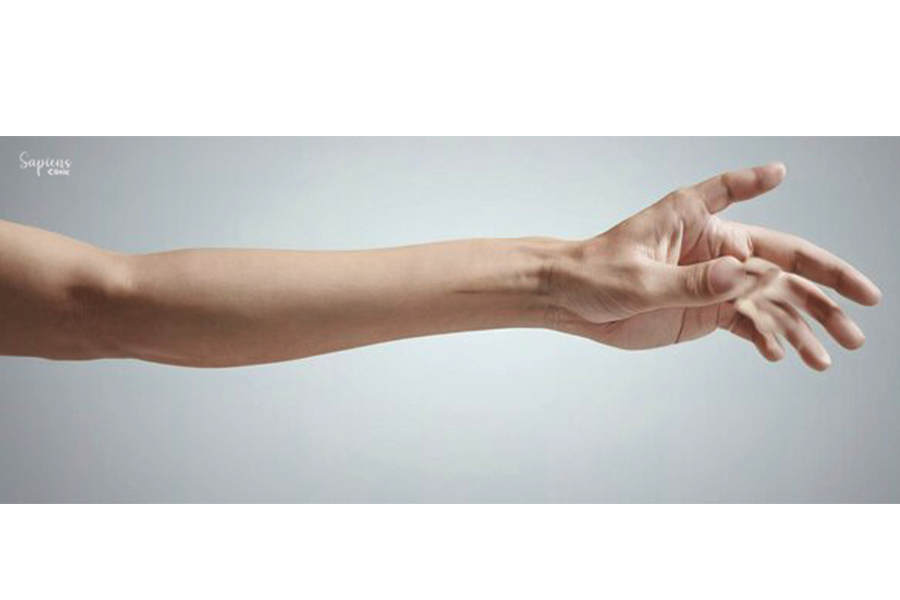Work-Related Upper Limb Disorders (WRULD) Treatment in Malleshwaram
Work-Related Upper Limb Disorders (WRULD) encompass a range of musculoskeletal conditions affecting the shoulders, arms, wrists, and hands, often resulting from repetitive tasks, sustainedpostures, or excessive force in occupational settings. At Sapiens Clinic in Malleshwaram, we specialize in the diagnosis, treatment, and prevention of WRULD, aiming to alleviate symptoms and enhance workplace well-being.
Understanding WRULD
WRULD refers to a spectrum of conditions that arise due to repetitive strain and overuse of the upper limbs in the workplace. These disorders can lead to pain, discomfort, and functional limitations, impacting both professional and personal activities.
Causes and Risk Factors
Several occupational factors contribute to the development of WRULD :
- Repetitive Movements: Tasks involving continuous repetition can strain muscles and tendons.
- Prolonged Static Postures: Maintaining the same position for extended periods increases muscle fatigue.
- Forceful Exertions: Applying excessive force during tasks can damage soft tissues.
- Inadequate Rest Breaks: Lack of recovery time hampers tissue repair.
- Poor Ergonomics: Workstations not designed to fit the worker can lead to awkward positions.
Psychosocial factors, such as high job demands and low control over work, may also elevate the risk of WRULD.
Symptoms
Individuals with WRULD may experience :
- Pain and Tenderness: In the affected muscles or joints.
- Stiffness: Reduced flexibility in the upper limbs.
- Numbness or Tingling: Often in the hands or fingers.
- Weakness: Decreased strength in the arms or hands.
- Swelling: Inflammation in the affected areas.
Early recognition of these symptoms is crucial for effective management.
Diagnosis
Diagnosing WRULD involves:
- Clinical Evaluation: Assessing medical history and occupational exposure.
- Physical Examination: Identifying tender points, range of motion, and strength.
- Imaging Studies: X-rays or MRI scans to detect structural abnormalities.
- Electrodiagnostic Tests: Evaluating nerve function when neuropathy is suspected.
A comprehensive assessment ensures accurate diagnosis and tailored treatment.
Treatment Options
Management of WRULD focuses on relieving symptoms and preventing recurrence :
- Ergonomic Interventions: Modifying workstations and tools to reduce strain.
- Physical Therapy: Exercises to improve strength, flexibility, and posture.
- Medications: NSAIDs to alleviate pain and inflammation.
- Occupational Therapy: Training in safe work practices and body mechanics.
- Rest and Activity Modification: Balancing work and recovery periods.
In severe cases, surgical intervention may be considered to address underlying structural issues.
Prevention Strategies
Preventing WRULD involves proactive measures :
- Regular Breaks: Incorporating short rests during repetitive tasks.
- Workplace Ergonomics: Designing tasks and environments to fit the worker.
- Employee Education: Training on proper techniques and early symptom recognition.
- Health Promotion: Encouraging physical fitness and stress management.
Implementing these strategies fosters a healthier work environment and reduces the incidence of WRULD.
Conclusion
Work-Related Upper Limb Disorders can significantly impact an individual’s occupational performance and quality of life. At Sapiens Clinic, Malleshwaram, our multidisciplinary team is dedicated to providing comprehensive care, from accurate diagnosis to personalized treatment plans, ensuring optimal recovery and prevention of future injuries.
FAQs
1. What occupations are most at risk for WRULD?
Jobs involving repetitive tasks, forceful exertions, or prolonged static postures, such as assembly line workers, computer users, and healthcare professionals, are at higher risk.
2. Can WRULD be completely cured?
With early intervention and appropriate management, many individuals experience significant improvement, though some may have persistent symptoms.
3. How long does recovery from WRULD take?
Recovery time varies depending on the severity and adherence to treatment but typically ranges from weeks to months.
4. Are ergonomic assessments available at Sapiens Clinic?
Yes, we offer comprehensive ergonomic evaluations to identify and mitigate workplace risk factors.
5. Is surgery commonly required for WRULD?
Surgery is considered only when conservative treatments fail and specific structural issues are identified.

Leave a Reply